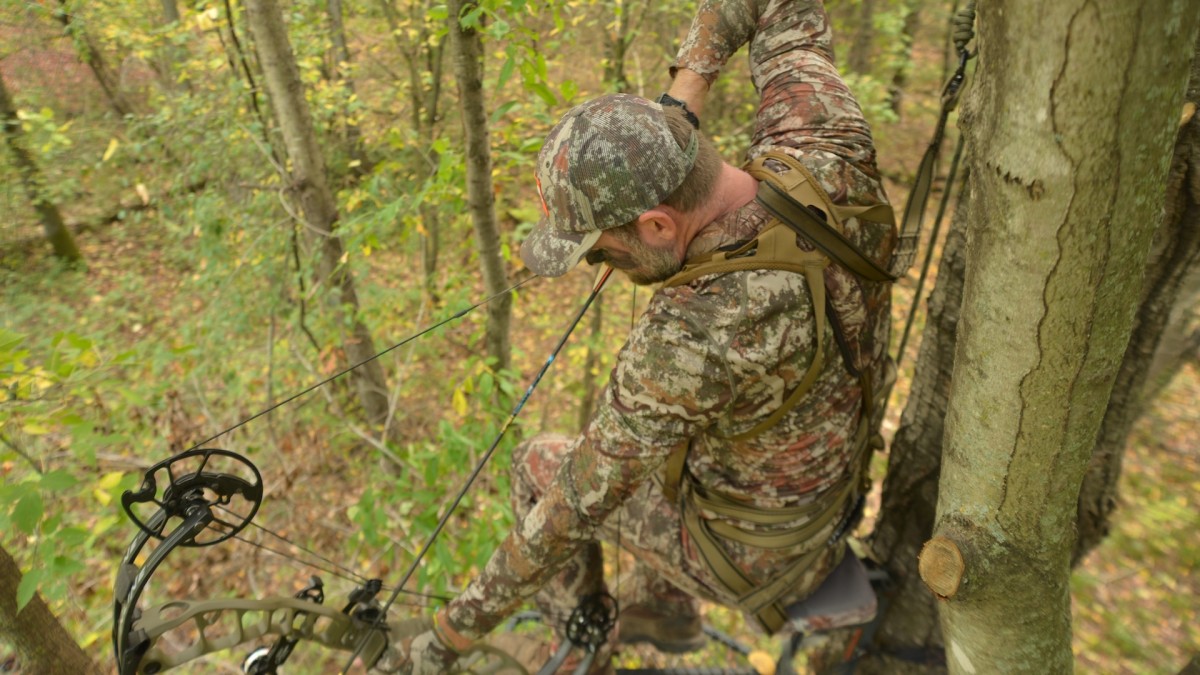
It was early October 1992, and I was sitting in a wooden treestand overlooking an oak-lined ridgetop. I wanted my first deer in the worst way, and she was heading in my direction. The young doe was on the hunt for a few acorns, and when she posed up at 10 yards, I drew and shot. What I didn’t do, was aim.
When my arrow passed over her back, my rising panic hit a fever pitch. Another arrow sailed high and buried into the dirt. With a 0 and 2 count, I stepped up to the plate one more time and prayed to the deer gods to let me get this one right. They didn’t listen. My third and last arrow followed the same trajectory as the first two.
It was my first, painful lesson on missing, but definitely not my last.
What Makes A Miss Sting The Most
There are two main reasons that make a whiff in the archery woods hurt the most. The first is when you just fall apart and miss an easy shot (or three). The second is when it involves a deer that you desperately want to kill. Combining those two at one time is a great way to make the kind of core memory that pops into your head as you’re just about to fall asleep at night. It begs the question of why our brains feel the need to remind us of how flawed we are by dredging up humiliating memories at inopportune times.
Airballing a shot on a deer you really want stings, but it can get worse. When I was stuck in the phase of bowhunting where I could kill young bucks but had yet to arrow a mature deer, I learned this more than a few times. The worst was missing two Minnesota studs in the same 10-minute sequence, entirely because I fell apart. Letting one slip through your fingers is painful enough, but following that up with an immediate repeat performance is something else.
I think about those two bucks every day, even though it has been two decades since that evening sit. They haunt me, but so do the deer that I’ve missed when I can’t pinpoint what went wrong.
The Mystery Misses
One thing that filming whitetail hunts teaches you is that what you experience in your mind during a shot is rarely an exact replica of what actually happened. I know people who have never filmed might not believe that, but it’s true. In fact, it’s nearly universally true in my experience.
Things go wrong, and we often don’t know why or how. We just know that everything felt good, and suddenly, an entirely healthy deer exited the scene and left us with an open spot in our quiver. That’s when we fill in the blanks.
The buck must have ducked because my pin was centered. I must have hit a twig. In our heads, we are rarely at fault. In real life, we make mistakes all of the time, especially in high-adrenaline situations. Sometimes, you can make an educated guess on what happened, but some whiffs are truly mysteries.
About 10 years ago, I hung a set on the edge of a swamp in central Minnesota during the late season. The sign in the snow promised some action, and my standards were low. When I heard something coming through the saw grass, I stood up and turned slowly.
A mature doe was on her way in, and when she stopped at 20 yards I was already planning out when I’d butcher her. There was nothing for my arrow to deflect off of, she was at exactly top pin range, and she was relaxed. I felt like I was, too, until I shot two inches over her back and she took off. I have no idea what went wrong other than I think I just defaulted to spray-and-pray mode for a second and didn’t aim correctly.
The next deer to come in was a little buck, and he died in sight. Bowhunting goes like that. It’s chock full of painful, teachable moments.
Learn and Let Go
A whiff, or several, will teach you a few things. The major takeaway is that multiple variables conspire on every shot to cause things to go awry. Your job is to eliminate as many as possible. Maybe that’s through more shooting practice, which is rarely a bad idea. Maybe you need to be more comfortable shooting from a stand, or you need to trim your shooting lanes better.
Maybe you panic and guess shot distance when you should be using your rangefinder more. Maybe you’re taking shots you shouldn’t, and instead of forcing an arrow to fly, you should let the encounters unfold naturally. This was one of my biggest problems as a young bowhunter, and learning to be patient with my shot selection and throughout my shot process changed the percentage of positive outcomes by a lot.
The misses suck, but they are part of the process. They are also the blueprint for how to do better in the future. I’ve found the best practice is to try to process what’s going wrong, work on getting better, and develop more confidence as a shooter. That last one is key. The last thing you want is to think you’re going to miss when a buck is walking in, because then that’s exactly what’s going to happen.
For more information on how to become a better archer, check out these articles: The Archery Routine That Will Help You Kill More Deer, How To Fix Target Panic In 3 Steps, and How To Build An Archery Target Stand.





